Types of Print Binding
Saddle Stitch Binding
popular and cost effective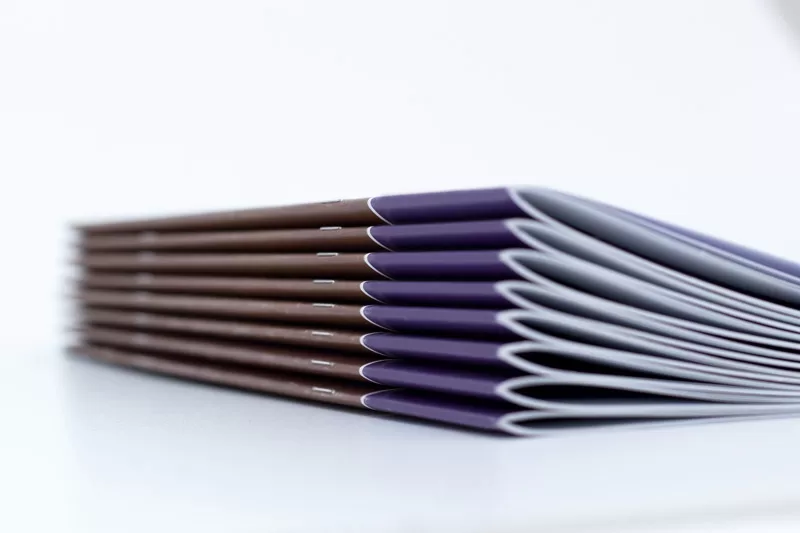
Saddle stitch binding is a popular choice for smaller booklets, brochures, and magazines. This type of binding is recognized for its simplicity, affordability, and speed of production, making it ideal for shorter, less formal publications.
The process begins with the printed pages, which are arranged in order and then folded in half. The folded pages are then stapled along the fold line, also known as the crease or the 'saddle'. This is where the 'saddle stitch' term originates. The staples pass through the fold from the outside and are clinched between the centermost pages.
One important thing to note about saddle stitch binding is that the page count of the booklet must be divisible by four. This is because each folded sheet used in saddle stitch binding creates four pages of the booklet: two front and two back. If a booklet has a page count not divisible by four, blank pages would need to be added to make up the difference, which can impact the layout and design of the publication.
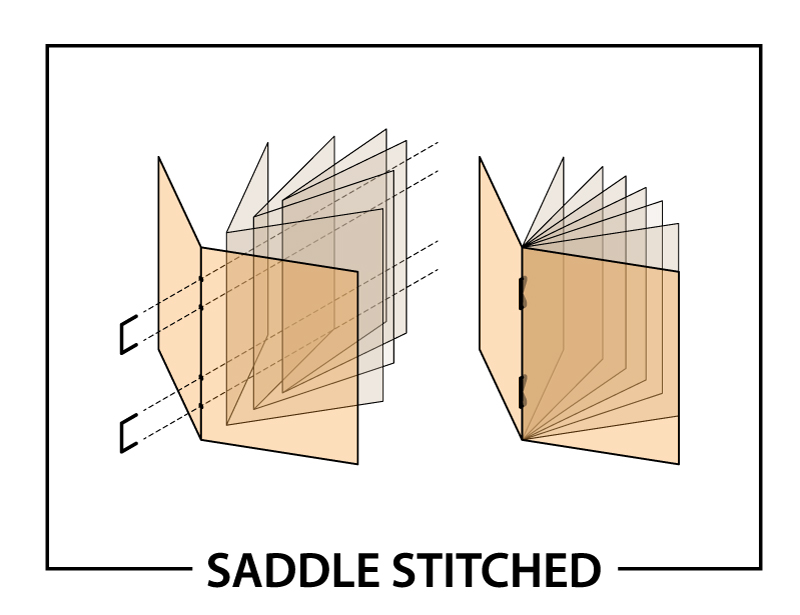
- Cost-effective: Saddle stitch binding is generally less expensive than other binding methods, making it a good choice for smaller budgets.
- Quick production: The process of saddle stitch binding is relatively quick, which can be advantageous for projects with tight deadlines.
- Flat-lying: When opened, saddle-stitched booklets lay flat, which can be beneficial for artwork that spans two pages.
- Limited page count: Saddle stitch binding is not suitable for very thick publications due to the limitations of the folding and stapling process.
- Page count must be divisible by four: Because each sheet creates four pages, the total page count must be divisible by four. This can limit flexibility in terms of design and layout.
- Less durable: While sufficient for many uses, saddle-stitched booklets are not as durable as perfect bound or case bound books.
Spiral Binding or
Wire-O Binding
also known as coil bounding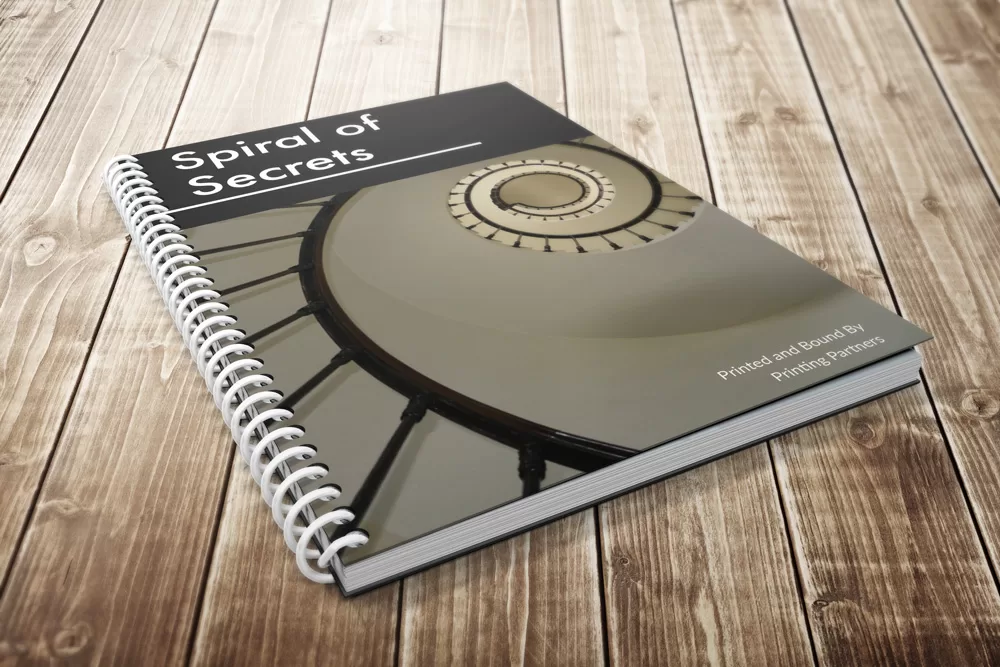
Spiral binding is a versatile and practical bookbinding method commonly used for workbooks, recipe books, reports, and manuals. At Printing Partners, we offer both plastic coil binding and Wire-O or double wire binding under the umbrella of spiral binding.
In the spiral binding process, holes are punched along the edge of the pages. Then, a plastic or metal coil is threaded through these holes, binding the pages together. The ends of the coil are then crimped to prevent it from unwinding. The result is a book that can lay flat when opened and can also be folded back onto itself, making it very user-friendly.
Plastic coil binding uses a durable plastic coil, which is available in a variety of colors for customization. On the other hand, Wire-O or double wire binding uses a pair of parallel wires. This provides a more formal and professional look compared to plastic coil binding.
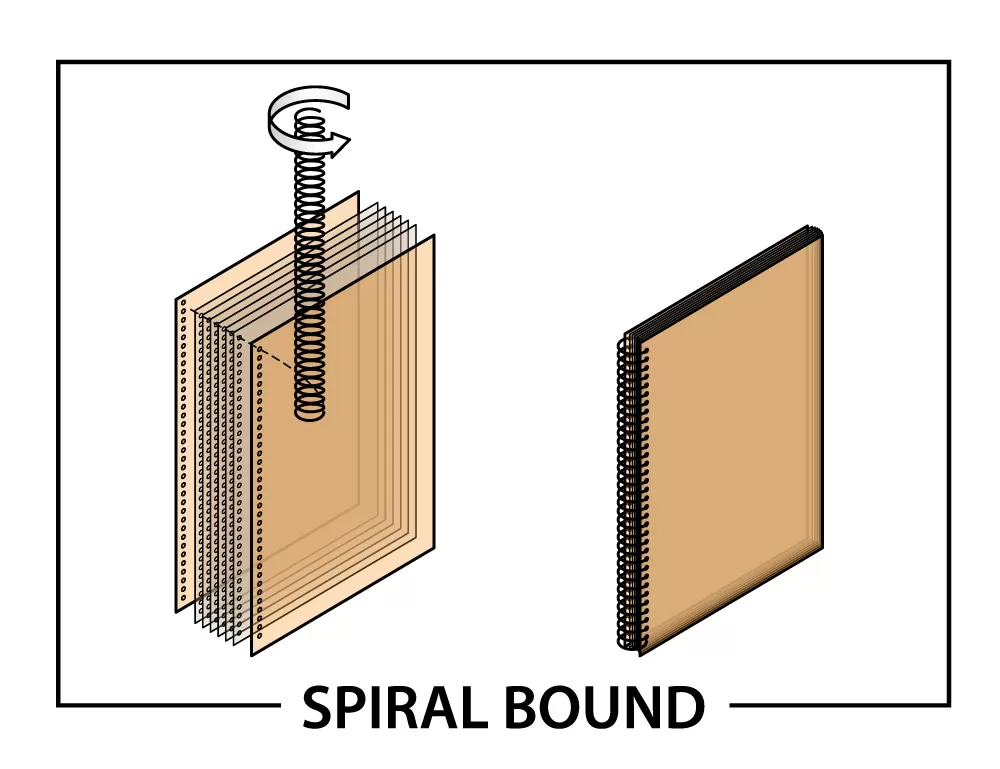
- Flexibility: Spiral binding is effective for short-run books, providing flexibility in the quantity of books that can be produced.
- Lower Cost: This method offers a cost-efficient solution compared to some other binding methods.
- Usability: The ability of spiral-bound books to lay flat or fold over increases usability for the reader.
- Distribution: Spiral binding may not be suitable for standard distribution and retail channels.
- Perception: Spiral-bound books can give the impression of being self-published.
- Durability: Compared to other binding types, spiral-bound books lack rigidity, which can lead to a more flimsy feel.
Perfect Binding
also known as paperback book binding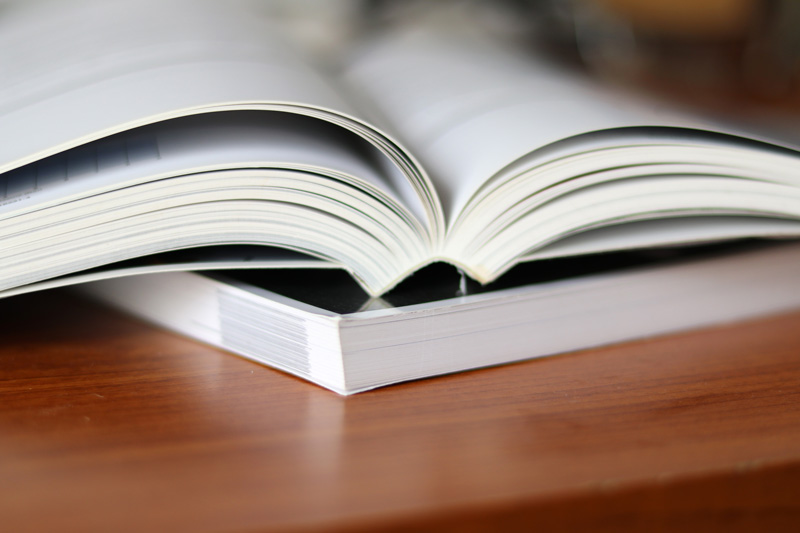
Perfect binding, often referred to as paperback binding, is a popular bookbinding method that you'll frequently see being used for a variety of materials, including novels, catalogs, and magazines.
The process begins with the printed pages of the book, also known as the book block. These pages are gathered and cut to create a perfectly flat edge, where a strong, flexible adhesive is applied. This adhesive binds the pages together at the spine, creating a durable hold. Following this, a soft cover is attached to the spine, completing the book. At Printing Partners, we're capable of binding books as thin as 1/8" up to as thick as 2" using this method, offering a wide range of possibilities for your perfect binding needs.
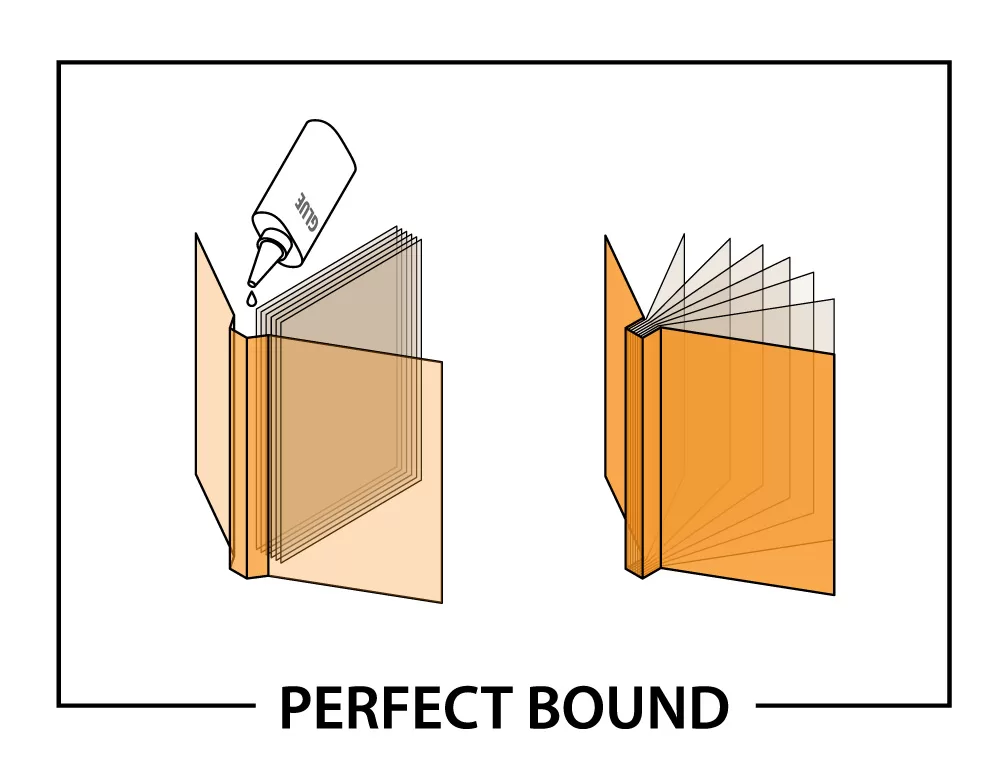
- Sleek Aesthetics: Perfect bound books carry a neat and professional look. The spine can also accommodate printed text, offering unique design opportunities.
- Value for Money: When compared to some other binding methods, perfect binding presents a more economical choice, even for smaller print runs.
- Flexibility: Perfect binding is suitable for a diverse range of page counts and book dimensions, adding a layer of versatility to your printing projects.
- Flatness Issues: Perfect bound books may not lie completely flat when opened, which could potentially damage the spine if forced.
- Writing Constraints: If the end user intends to write in the book, perfect binding might not be ideal due to the difficulty in keeping the book flat.
- Graphic Design Considerations: With perfect binding, the spine encases part of the bound side of the book. This necessitates careful planning when designing graphics that span two pages.
Ota Binding
also known as layflat binding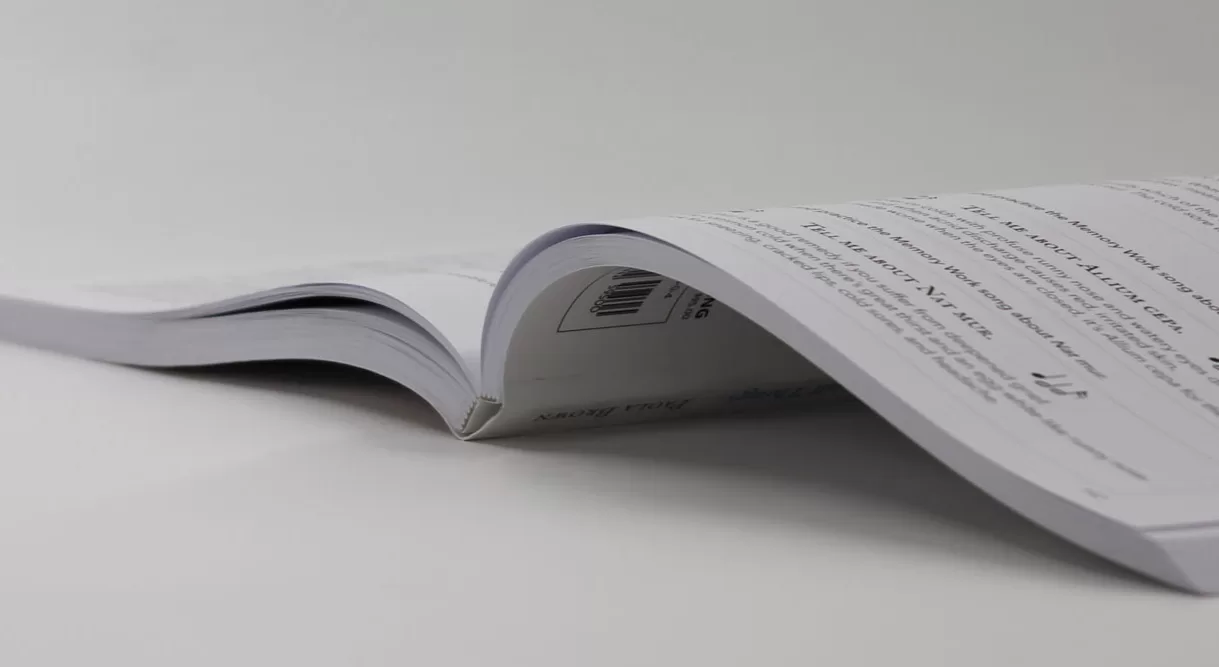
Otabind, or Layflat Binding, is a unique and innovative binding technique that was first patented in 1981 by the Finnish firm 'Otavia.' As the name suggests, it's designed to allow books to lay flat once opened, significantly reducing the stress on the spine and potential cracking that occurs during use. This is achieved through a free-floating cover that doesn't adhere to the spine of the book block, instead connecting only to the outer pages. This distinctive method gives Layflat Binding its signature look and functionality, making it a popular choice for a wide range of book types, from cookbooks to academic textbooks.
In the Otabind process, the book's pages are arranged, cold-glued at the spine, and left to dry for 24 hours. The cover is then attached only to the first and last pages, creating a free-floating spine. This two-pass process is more time-consuming than perfect binding, but it allows the book to lay flat when opened, significantly enhancing the reader's experience and offering a unique aesthetic. Despite the extra time, Otabind's advantages make it a valuable choice for many books.
- Flexibility: Otabind allows books to lay flat when opened, making it ideal for cookbooks, manuals, or any other type of book that could benefit from this feature.
- Stress-free spine: The unique free-floating cover design of Otabind reduces the stress on the spine and minimizes the risk of cracking during use.
- Durability: Despite using a cold-glue method, Otabind produces a strong bind that is unlikely to detach from the spine, ensuring the book's longevity.
- Production time: The Otabind process involves applying cold glue to the spine and allowing it to dry, a process that takes 24 hours. This, along with the separate cover attachment step, makes Otabind more time-consuming than other binding methods.
- Cost: The longer production time can result in higher costs compared to other binding methods.
- Book appearance: The visible gap along the spine, a result of the free-floating cover, may be aesthetically unappealing to some readers.
Case or Edition Binding
also known as hardcover book binding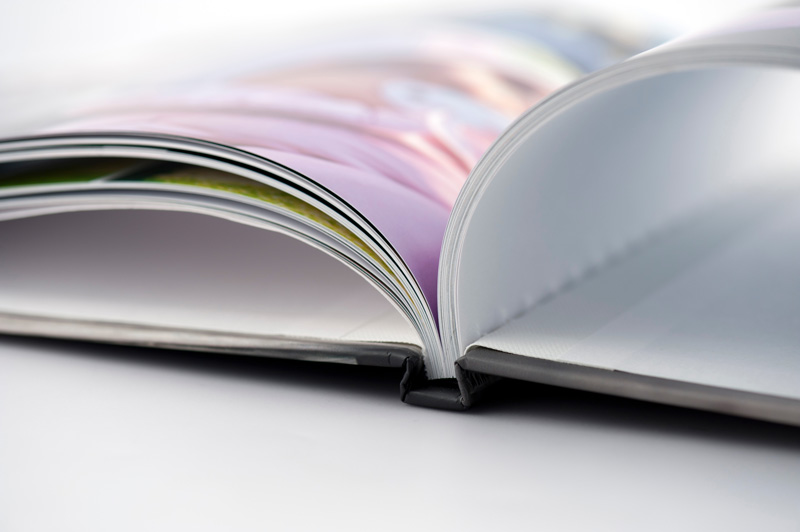
Case binding, also known as hardcover binding, is a highly regarded bookbinding method associated with premium quality and durability. You'll often find this type of binding being utilized for hardcover books, high-end catalogues, and art books, among others.
The process begins with your printed pages, which we refer to as the book block. These pages are gathered and sewn together, creating a strong, resilient spine. Following this, we create a hard cover, typically from robust materials such as cardboard or binder's board. This cover is then wrapped in a covering material that can range from cloth and paper to leather, depending on your preference. We can print designs or text on the covering material, allowing for customization to match your vision. Finally, the cover is attached to the book block using a strong adhesive, resulting in a professionally bound, durable book. At Printing Partners, we have the ability to handle a wide range of book sizes and thicknesses with our case binding method, ensuring we can meet your specific needs.
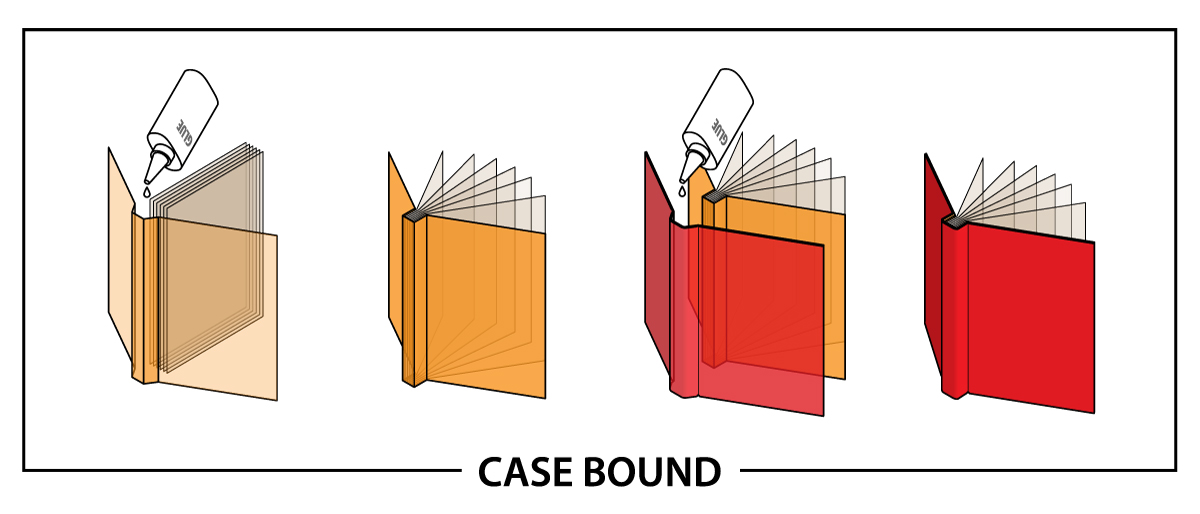
- Superior durability: Our case binding provides a tough cover that protects the book's pages from damage.
- Long lifespan: Case binding is designed to withstand frequent use, ideal for books that will be heavily used or kept for years.
- High-quality appearance: Case binding offers a professional, prestigious look to any book.
- Customizable: From the cover material to the design and text, we can customize your hardcover to match your vision.
- Cost: Due to the high-quality materials and process, case binding can be more expensive than other binding methods.
- Weight: Hardcover books are heavier than their softcover counterparts, which might be a consideration for transportation or shipping costs.
- Production Time: The process of creating a hardcover book can take longer than other methods due to the detailed steps involved.
Smyth Sewn Binding
also known as book block sewn binding orsewn bound books
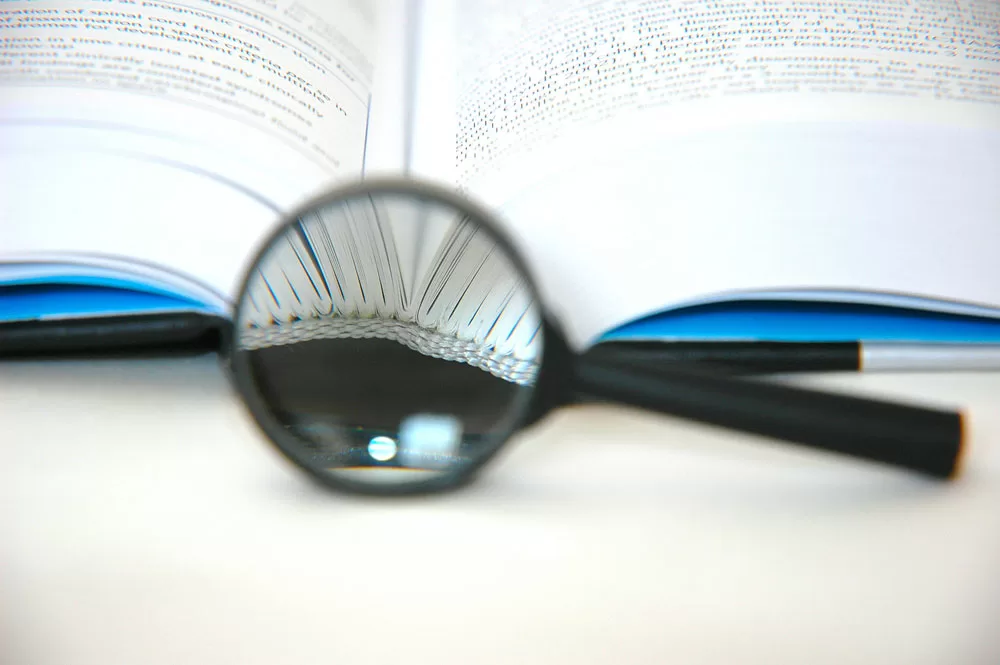
Smyth sewn binding is a prestigious bookbinding method known for its high durability and quality. You'll often see this method used in high-end publications, such as art books, coffee table books, and textbooks, as well as in journals and logbooks.
The process begins with the printed pages, which are arranged into small groups, known as signatures. Each signature is then sewn together individually. Once all signatures have been sewn, they are sewn together to form the book block. The threads used in the sewing process are high-strength, ensuring a strong, durable bind. Following this, a cover is attached to the book block, completing the binding process. Smyth sewn binding allows the book to lay flat when opened, which makes it ideal for books with designs or text that span across two pages.
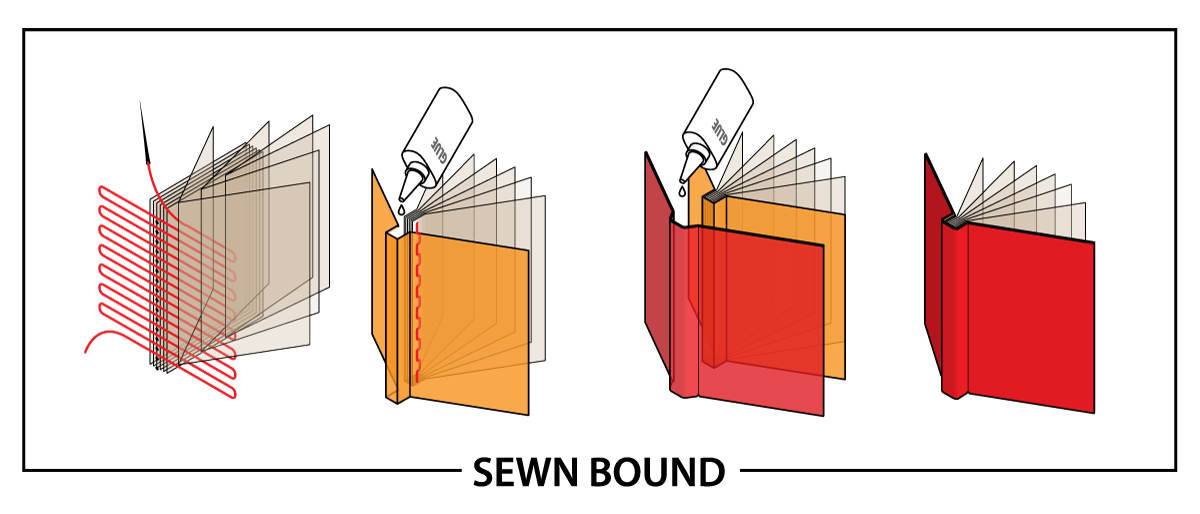
- High durability: Thanks to the sewing process, Smyth sewn books are incredibly durable and can withstand heavy use.
- Lay-flat design: Smyth sewn binding allows books to lay flat when opened, ideal for artwork or text that spans across two pages.
- Long lifespan: The high-quality materials and craftsmanship that go into Smyth sewn binding result in a book that can last for years.
- Cost: Smyth sewn binding is a more costly method due to the labor-intensive process and the high-quality materials used.
- Production time: The detailed process of sewing each signature individually can result in a longer production time compared to other binding methods.
- Weight: Smyth sewn books can be heavier than books made with other binding methods, which could impact shipping costs or portability.
Our Binding Equipment
Hunkeler Tipping Machine
Ventura Sewing Machine
Bolero Binder
Diamant Case-in Line Machine
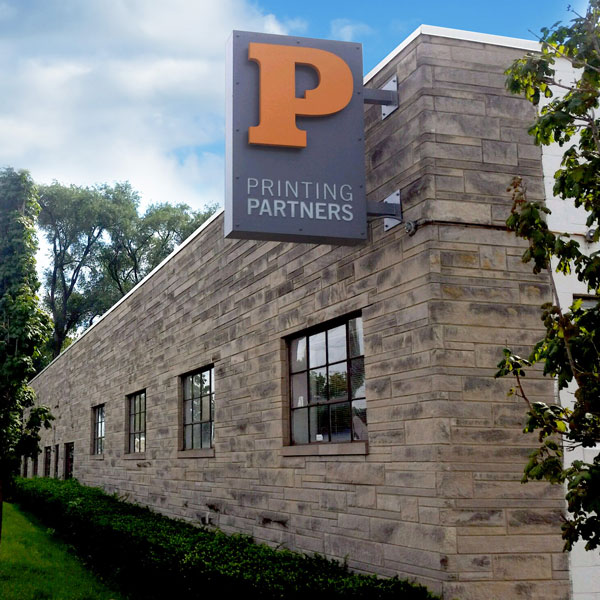
Why Choose Printing Partners?
Our Services Cater to a Variety of Needs

